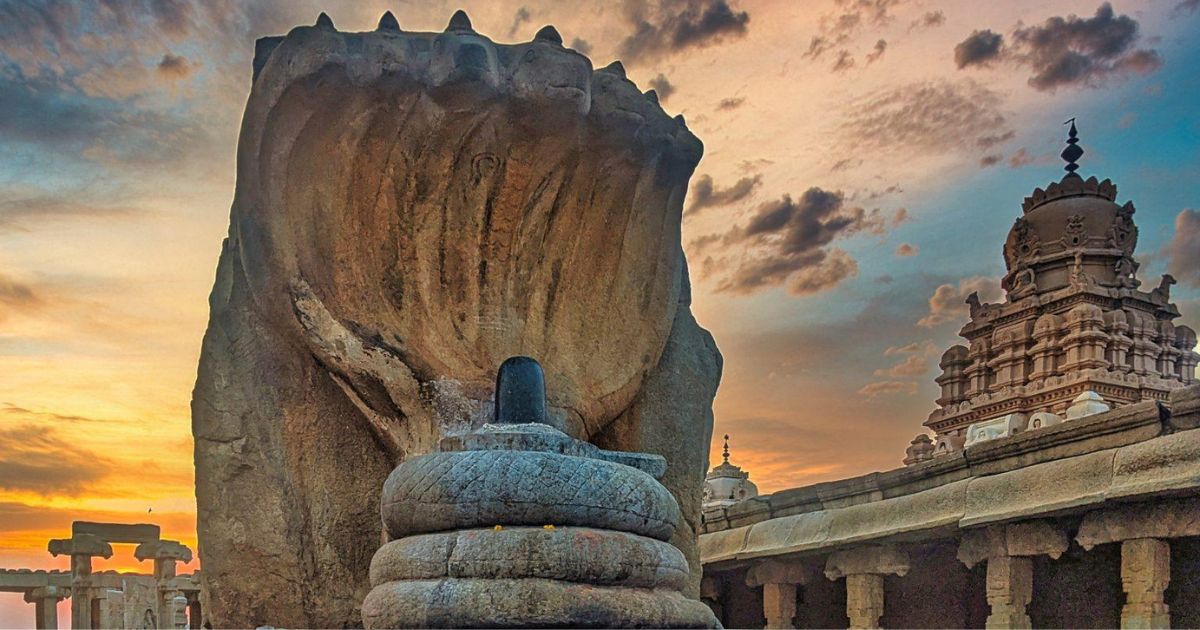Veerabhadra Temple, also known as Lepakshi Temple, was built in the 16th century by the brothers Viranna and Virupanna, who were governors under the Vijayanagara Empire. It is dedicated to Lord Veerabhadra, a fierce form of Shiva. According to legend, this is the spot where Jatayu, the mythical bird from the Ramayana, fell after trying to rescue Sita from Ravana. “Le Pakshi” literally means “Rise, bird!”—the words Lord Rama is believed to have said to Jatayu.
The temple dates back to 1530 AD, which makes it nearly 500 years old. Its rich legacy, detailed carvings, and spiritual aura have stood the test of time, attracting history buffs, architecture enthusiasts, and pilgrims alike.
Lepakshi Temple Opening and Closing Timings
The temple is open daily from 6:00 AM to 6:00 PM. No entry is allowed after 6 PM, so plan accordingly if you want to see everything in daylight. Morning hours are ideal for peaceful exploration and good photography light.
How to Reach?
Lepakshi is about 120 kilometers from Bangalore, making it a solid 2.5 to 3-hour drive one way. It is a perfect day-trip destination or a quick weekend getaway.
Transport Options:
By Car: The most convenient option. Take NH44 via Devanahalli and Chikkaballapur. Roads are smooth, and the drive is scenic.
By Bus: Direct buses to Hindupur (the nearest town) are available from Bangalore’s major bus stations. From Hindupur, you can catch an auto or taxi to Lepakshi (15 km away).
By Train: Trains run from Bangalore to Hindupur. From there, it is a short drive or auto ride to the temple. It is budget-friendly but might take a bit more time.
Hotels Near Lepakshi Temple to Stay
If you want to turn your trip into a peaceful overnight stay, check out Nandi Farm Resor & Hotel in Lepakshi. It is clean, family-friendly, and gives you a countryside feel.
Architectural Highlights
1. Lepakshi Temple Hanging Pillar
One of the biggest attractions is the hanging pillar—yes, it literally does not touch the ground! It is an architectural marvel from the Vijayanagara era. A piece of cloth or paper can pass underneath, showing how precise the ancient engineering was. It is believed this was done to balance the weight of the structure and support the ceiling.
2. Lepakshi Temple Garuda
Right before you enter the temple complex, you will spot a massive Garuda statue—Lord Vishnu’s vehicle. It is kneeling, as if in devotion, and is perfectly aligned to face the inner sanctum. It is a beautiful blend of reverence and sculptural artistry.
3. Lepakshi Temple Footprint
Inside the temple, you will see a giant footprint believed to be that of Sita (yes, that Sita from the Ramayana). The footprint stays moist, even in dry seasons, which locals see as a divine sign. Science has no solid explanation yet.
4. Lepakshi Temple Paintings
The temple’s ceilings are filled with vibrant frescoes depicting scenes from the Ramayana and Mahabharata. The colors have survived for centuries, painted using natural dyes and ancient techniques. These murals tell stories that are both artistic and mythological gold.
5. Lepakshi Temple Bleeding Eyes
A sculpture of Veerabhadra in the sanctum has eyes said to be “bleeding” due to the red pigment applied traditionally. Over time, this has created an eerie but powerful visual effect. Some say it represents Veerabhadra’s rage over Sati’s death.
6. Murals and Frescoes on Ceilings
You can not miss the massive ceiling mural of the 14 avatars of Shiva—possibly the largest of its kind in Asia. The detailing is jaw-dropping. These were made with limestone, vegetable colors, and fine brushes, showcasing rare artistic mastery.
7. Stone Carvings, Mandapas, and Intricate Sculptures
Walk around and you will see monolithic carvings, intricately designed pillars, and beautifully sculpted mandapas (halls). Each tells a story—some feature gods, others dancers, musicians, and mythical creatures. Don’t rush this part—soak in the details.
8. Massive Monolithic Nandi Statue (Among the Largest in India)
Just before reaching the temple, stop at the monolithic Nandi, carved out of a single granite rock. It is 4.5 meters high and 8.2 meters long, making it one of the biggest in India. It faces the temple directly and is a perfect photo spot.
Best Time to Visit
The ideal time is October to February, when the weather is pleasant and walking around doesn’t feel like a punishment. Avoid summer afternoons unless you are cool with baking in 40°C heat. Weekdays are quieter if you want to dodge crowds.
Things to Carry
- Water bottle (no shops inside the temple complex)
- Hat/umbrella and sunscreen(shade is limited)
- Camera or phone (photography is allowed except inside the sanctum)
- Sunglasses and comfortable footwear
- Respectful Dress Code
Whether you are coming for the history, the Veerabhadra Temple’s mysteries, or just a peaceful escape from city chaos, Lepakshi Temple Hindupur delivers. It is a soulful place where myth, art, and engineering blend into something unforgettable. Add it to your travel list—you won’t regret it.

